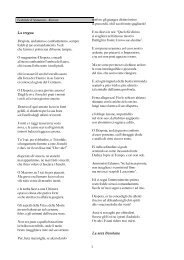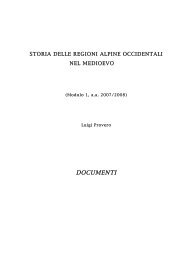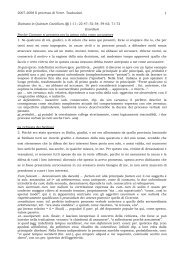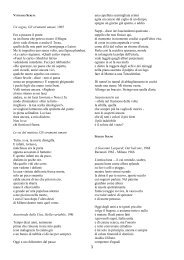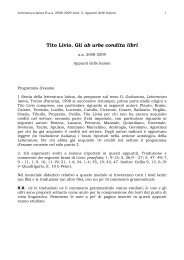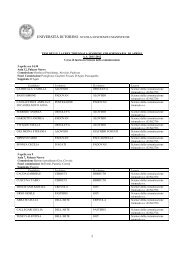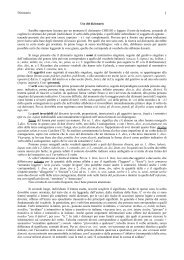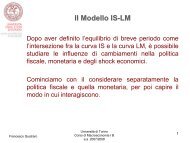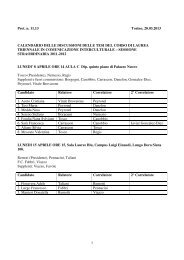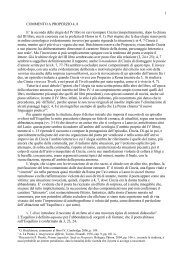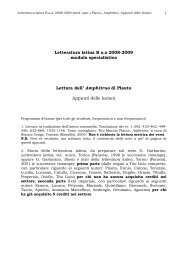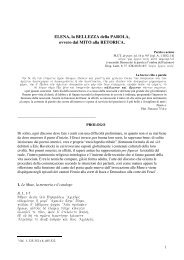ajAti vAda
ajAti vAda
ajAti vAda
Create successful ePaper yourself
Turn your PDF publications into a flip-book with our unique Google optimized e-Paper software.
From L to R: SrI svarUpAnanda sarasvatI<br />
(Jyotirmath), SrI abhinava vidyA tIrtha<br />
(Sringeri), SrI niranjana deva tIrtha (Puri), SrI<br />
abhinava saccidAnanda tIrtha (Dvaraka) -<br />
Meeting at Sringeri in 1979.<br />
The successor to the title in a maTha is usually nominated by the presiding<br />
SankarAcArya of that maTha. It is quite normal to see SankarAcAryas who have<br />
become sannyAsIs directly from the student life, without ever having been gRhasthas.<br />
This is especially the norm in the Sringeri lineage. Thus, a SankarAcArya can be a very<br />
young man, sometimes barely out of his teens, when he takes charge at his maTha. On<br />
the other hand, the Puri lineage has seen many heads who have become sannyAsins quite<br />
late in their lives, after passing through the gRhastha stage. In cases where a<br />
SankarAcArya passes away without nominating a successor, or if there is a dispute about<br />
the succession, the head of one of the other maThas is consulted to resolve the issue.<br />
Within this century itself, there have been instances where the SankarAcAryas of<br />
Sringeri, Dvaraka, and Puri have been called upon to resolve succession issues in one of<br />
the other maThas. The Sringeri lineage names thirty-six successors to the SankarAcArya<br />
title, while Dvaraka has about seventy. The Puri list of SankarAcAryas has more than<br />
140 names to date. The larger number of names in these two lists is probably because<br />
many of the presiding SankarAcAryas have been former gRhasthas, who took charge at<br />
a comparatively older age and consequently held charge for shorter periods. The line of<br />
the Jyotirmath has many gaps in it, an unfortunate circumstance of history.<br />
The position of the SankarAcAryas in modern Hinduism has often (quite wrongly) been<br />
compared to that of the Pope in Roman Catholicism. The four SankarAcAryas do not<br />
issue catechisms for all Hindus, nor do they claim sole right to decide on doctrinal<br />
issues. SrImukham.s issued by the maThas are very different in nature from papal bulls<br />
or encyclicals, and unlike the Vatican City, the four maThas do not enjoy sovereign<br />
status. Rather, they are governed by the federal and state laws on religious and charitable<br />
trusts and endowments in independent India, and are often answerable to governmental<br />
bodies.<br />
However, this should not be construed to mean that the SankarAcAryas are insignificant<br />
or that their importance is overrated. They are held in high respect by almost all sections<br />
of Hindus, but they also tend to get blamed by the modern media, somewhat unfairly, for<br />
everything that goes wrong in Hindu society! For all that, however, the SankarAcAryas<br />
generally lead quiet, secluded lives, as befits monks, and tend to avoid media attention.<br />
There are, of course, exceptions to this norm, and recent developments in India,<br />
especially the Ramjanmabhoomi-Babri Masjid issue, have forced all of them to take<br />
more active roles in public life.<br />
Recent history of the four AmnAya maThas:



